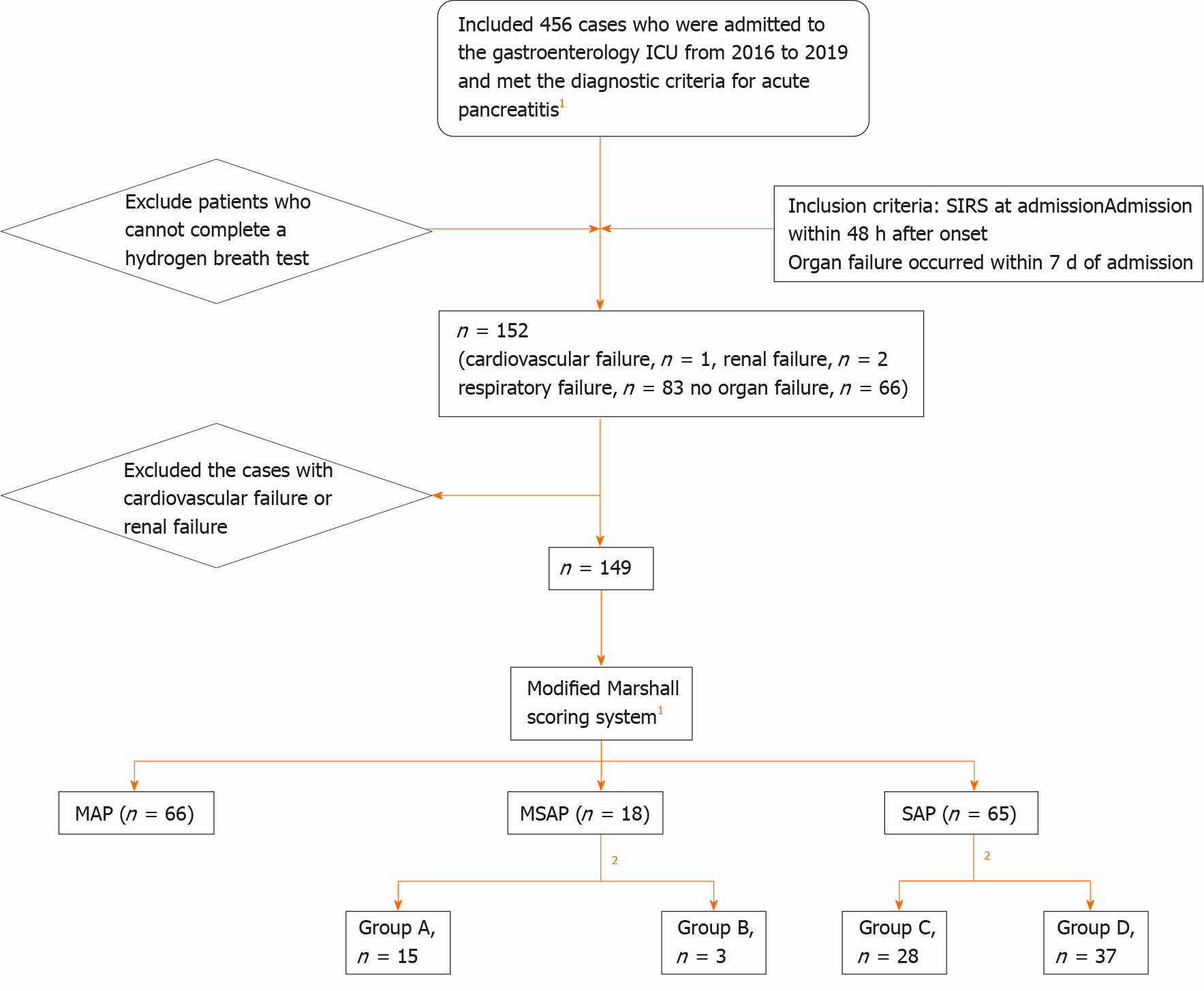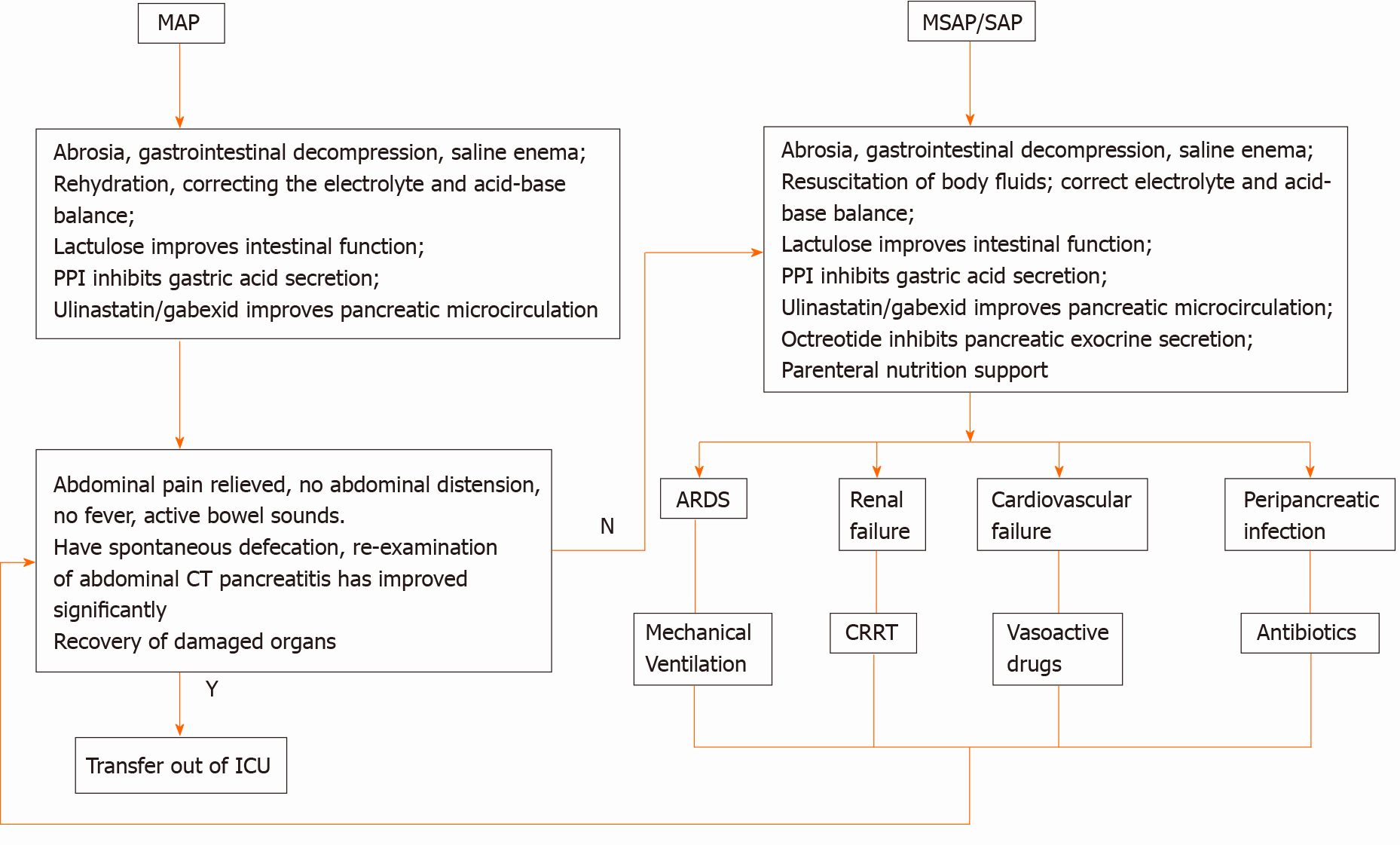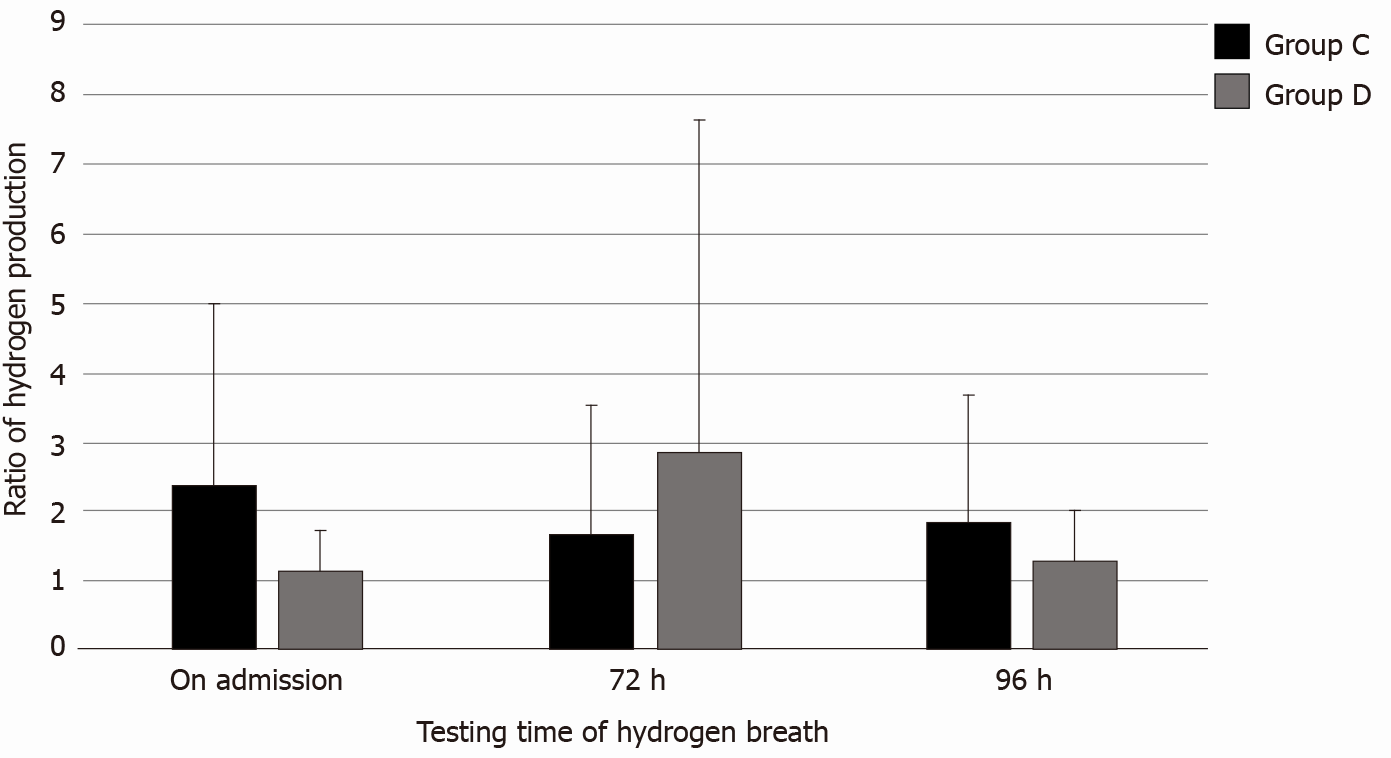Copyright
©The Author(s) 2021.
World J Gastroenterol. Apr 21, 2021; 27(15): 1643-1654
Published online Apr 21, 2021. doi: 10.3748/wjg.v27.i15.1643
Published online Apr 21, 2021. doi: 10.3748/wjg.v27.i15.1643
Figure 1 Research sample screening and grouping process.
1Classification of acute pancreatitis 2012: revision of the Atlanta classification and definitions by international consensus. 2Report of the American-European Consensus conference on acute respiratory distress syndrome in 1994. Simplified standard: PaO2/
Figure 2 Treatment process.
MAP: Mild acute pancreatitis; MSAP: Moderately severe acute pancreatitis; SAP: Severe acute pancreatitis; PPI: Proton pump inhibitor; CT: Computed tomography; ICU: Intensive care unit; ARDS: Acute respiratory distress syndrome; CRRT: Continuous renal replacement therapy; Y: Yes; N: No.
Figure 3 The correlation between changes in intestinal bacteria and acute lung injury/acute respiratory distress syndrome in the severe acute pancreatitis group.
Group C: PaO2/FiO2 = 2; Group D: PaO2/FiO2 > 2.
- Citation: Liang XY, Jia TX, Zhang M. Intestinal bacterial overgrowth in the early stage of severe acute pancreatitis is associated with acute respiratory distress syndrome. World J Gastroenterol 2021; 27(15): 1643-1654
- URL: https://www.wjgnet.com/1007-9327/full/v27/i15/1643.htm
- DOI: https://dx.doi.org/10.3748/wjg.v27.i15.1643











